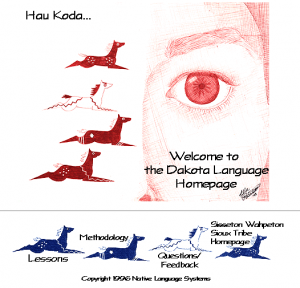http://www.research.vt.edu/resmag/sc98/lockee.html
This article discusses the ideas of Barbara Lockee of Virgina Tech. Lockee did her doctoral dissertation on using hypermedia to perpetuate Native American languages. Although a small percentage of Native American people are fluent in a native language, Lockee suggests that there is hope because many elders believe that maintenance of tribal cultures is dependent on young people’s learning to read, write, and speak their native languages. As part of her dissertation work, Lockee is developing a program to help teach Native Americans their original languages.
Lockee mentions the reasons for why Native Americans lost their languages. Influences such as residential school and moving to reservations heavily affected preservation of native languages. With the lack of ability to communicate to elders, native peoples have a hard time learning about the their culture and heritage.
Lockee discusses how non-urban Native Americans have different learning styles that they have acquired at home. This is something important to consider when implementing language programs with Native students. These progams also need to be relevent and involve the context of actual situations.
The progam that Lockee is creating provides an opportunity for the students to translate and even write their own stories at their own pace. It also promotes critical thinking skills instead of memorization of content. The students would also be allowed to work in pairs to encourage cooperative, inter-related type learning that suits their cultural styles. Although her program is created for the Cherokee language, different tribes can adapt the program by inserting their own legends and languages into the template.
I find this document to be very encouraging as I understand that many Aboriginal peoples in Canada are also concerned with the loss of their language and heritage. Because there are so many different tribes and languages involved, it would be challenging to find or create a program similar to that of Lockee’s to possibly accommodate native language revival in Canada. With the available technology today, it seems quite possible. However, there is a time limit as elders only get older and will no longer be available to aid in the language revival process.
